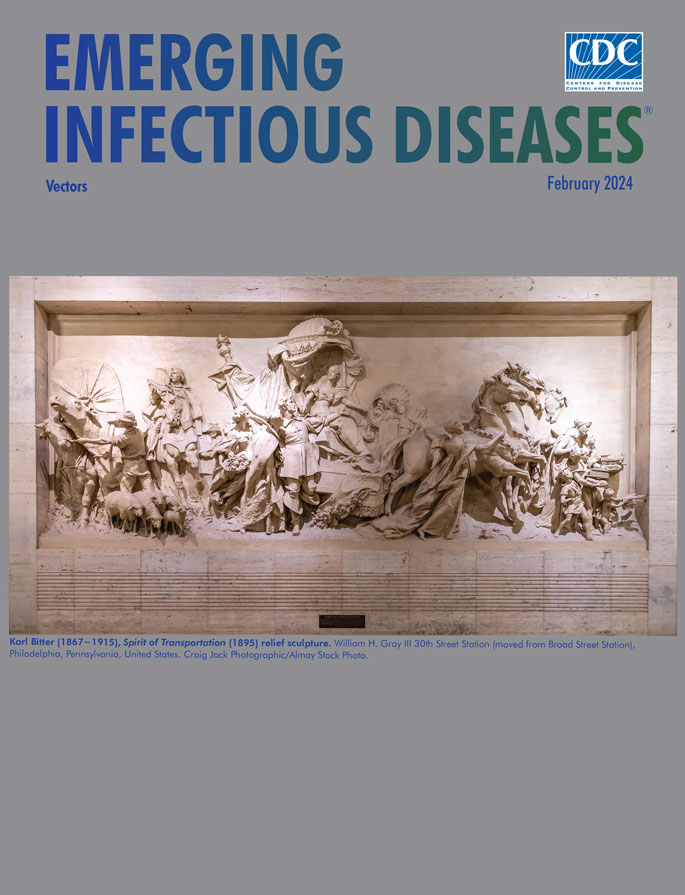大鼠中的 SARS-CoV-2 和其他冠状病毒,德国柏林,2023 年
IF 7.2
2区 医学
Q1 IMMUNOLOGY
引用次数: 0
摘要
我们对在柏林捕获的 130 只大鼠进行了冠状病毒检测。在 1 只大鼠体内检测到了 SARS-CoV-2 抗体,但所有动物的反转录 PCR 检测结果均为阴性,这表明 SARS-CoV-2 并未在大鼠群体中流行。但是,发现了阿尔法克罗那病毒。监测啮齿动物种群有助于确定冠状病毒的发生、传播和人畜共患的可能性。本文章由计算机程序翻译,如有差异,请以英文原文为准。
SARS-CoV-2 and Other Coronaviruses in Rats, Berlin, Germany, 2023
We tested 130 rats captured in Berlin for coronaviruses. SARS-CoV-2 antibodies were detected in 1 rat, but all animals were negative by reverse transcription PCR, suggesting SARS-CoV-2 was not circulating in the rat population. However, alphacoronaviruses were found. Monitoring rodent populations helps to determine coronavirus occurrence, transmission, and zoonotic potential.
求助全文
通过发布文献求助,成功后即可免费获取论文全文。
去求助
来源期刊

Emerging Infectious Diseases
医学-传染病学
CiteScore
17.30
自引率
1.70%
发文量
505
审稿时长
1 months
期刊介绍:
Emerging Infectious Diseases is a monthly open access journal published by the Centers for Disease Control and Prevention. The primary goal of this peer-reviewed journal is to advance the global recognition of both new and reemerging infectious diseases, while also enhancing our understanding of the underlying factors that contribute to disease emergence, prevention, and elimination.
Targeted towards professionals in the field of infectious diseases and related sciences, the journal encourages diverse contributions from experts in academic research, industry, clinical practice, public health, as well as specialists in economics, social sciences, and other relevant disciplines. By fostering a collaborative approach, Emerging Infectious Diseases aims to facilitate interdisciplinary dialogue and address the multifaceted challenges posed by infectious diseases.
 求助内容:
求助内容: 应助结果提醒方式:
应助结果提醒方式:


